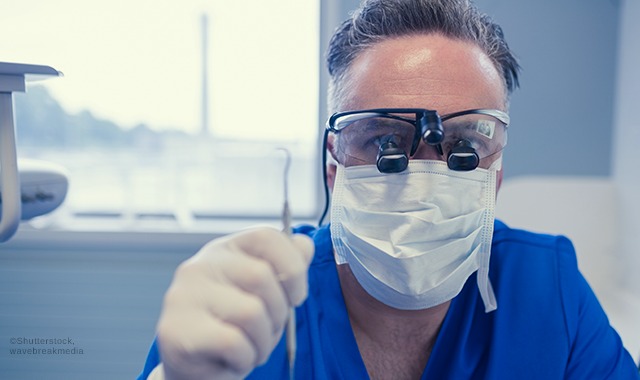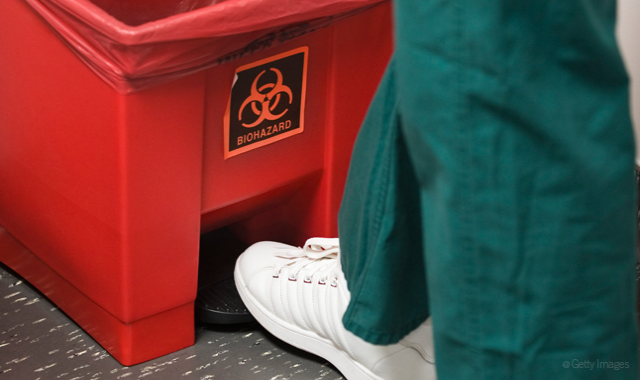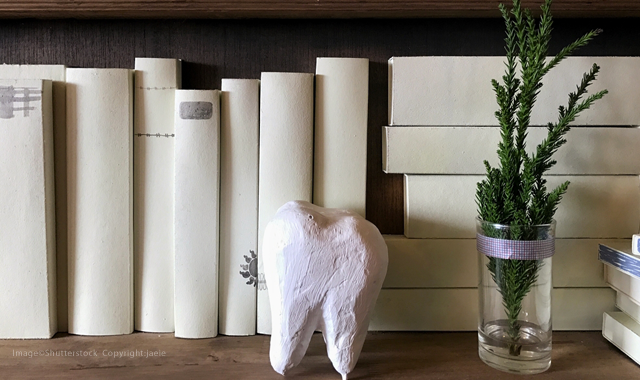6 questions about infection control that you might be afraid to ask
Seeking the answers to questions about infection control will help protect your practice and your patients.
There’s a lot of detail when it comes to infection control. While some aspects of it can seem rather straightforward, others can be complex and overwhelming.
Related reading: How to prevent cross-contamination in the dental office
Understanding all that infection control entails is often about asking the right questions.
Click through the slides to see six questions that dentists and dental staff members should be asking.


Why and how often do we have to have OSHA bloodborne pathogens training?
It might seem like overkill to keep training on the same subject. That is, once you have learned the topic, why does it need to be repeated?
“As an authorized OSHA trainer, I always poll my audiences with the question, ‘How often do you need to conduct annual OSHA training? I’ll give four options: Once a year, once every other year, once every 10 years, or once in a blue moon,’” says Karen Daw of Karen Daw Consulting and former clinic health and safety director for The Ohio State University College of Dentistry. “With the exception of the ‘blue moon’ response, I’ve, at times, received the answers equally distributed. In reality, employees must receive training upon hire, annually and when there’s a change in the standard.”
More from the author: 5 things you need to know about personal protective equipment
When bloodborne pathogens are involved, repetition benefits everyone and, as it turns out, is required.
Daw explains, “From OSHA, ‘Employers must ensure that their workers receive regular training that covers all elements of the standard. ... Employers must offer this training on initial assignment, at least annually thereafter, and when new or modified tasks or procedures affect a worker’s occupational exposure. … Workers must have the opportunity to ask the trainer questions.’”
So, why is this question so rarely asked?
“I think few people inquire about the specifics of this because there is so much pressure on the OSHA/infection control coordinator in the office to know it all,” Daw says. “I once did a consult where the designated representative would ask me questions in hushed tones during the walkthrough. And, before too long, as people do, I started replying in whispers until we could barely hear each other. It was at that moment that I asked why we were speaking so softly. She admitted the doctor expects her to know her job, and so rather than disappoint, she avoided seeking assistance.”



How do we clean dental unit waterlines?
Contaminated waterlines become an issue from time to time. Most notably, in 2012, an 82-year-old woman in Georgia contracted Legionnaires’ disease. In 2016, 20 children contracted Mycobacterium abscessus from a pediatric dentist’s office. And when something like that happens, it makes the news.
“People have stepped up and taken notice,” says Leann Keefer, RDH, director, corporate education and professional relations at Crosstex International. “They’re asking, ‘Are we doing the right things?’”
One way to treat waterlines is by using chemical tablets. However, for it to be effective, they have to be used properly.
Trending article: Why hypnosis is right for your dental practice
“When people are using tablets, the entire protocol needs to be followed,” Keefer explains. “Meaning, that with tablet use, there is also going to be a protocol for shocking and monitoring. Sometimes, people think just because they’re dropping tablets in, they are doing enough. And, in fact, they are not following the protocol. When I ask, ‘Are you reading the IFU for whichever dental waterline product you’re using and making sure that you’re following the entire protocol?’ That’s often an ah-ha moment for people.
“One of the common responses I often hear is, ‘Well, we’ve always done it that way,’” Keeper continues. “And that’s where they get into problems. They’re going back and reviewing the IFUs. They’re not asking themselves, ‘For all the other things we’re doing for infection control, are we doing them within best practice, or are we just falling into common practice? Have we become somewhat complacent? Are we accurately following the instructions?”
When an infection control breach makes the news, it isn’t just practices that take notice. Patients start to ask questions, too.
“Unfortunately, whenever you have an infection control breach, that tends to bring the issue to the surface,” Keefer says. “When something is on the front page of USA Today or CNN, it’s not just the practices but also the patients who are seeing it. Patients are becoming much more educated. For this reason, we’ve actually developed a patient brochure to help clinicians more easily explain what they are doing for the welfare of their staff and patients when asked by patients what they are doing to treat their dental unit waterlines.”



Are we using PPE the right way?
Personal protective equipment is, obviously, an important defense against accidental exposure. But are practices using it the right way?
“There is often a lack of awareness, especially with mask selection, mask wear and mask disposal,” Keefer says. “When I am in a course and I ask people, ‘What kind of mask are you using?’ I often get answers like, ‘I wear a pink one.’ But what they should know is what ASTM level of mask are they using. It’s important that they know whether they are wearing an appropriate ASTM-level mask for the particular task they’re doing. When we start talking about bioaerosols, this means they need to choose the right level of mask based on how long the task is and how much aerosol is being generated.”
Clinicians must understand that there are different types of PPE suitable for different jobs.
Related reading: How to stay up to date on infection control policies
“Because it’s not mandatory for manufacturers to rate their masks, not all masks are rated,” Keefer says. “So, there are masks on the market that have no rating. If the box doesn’t have any indication whether it is a Level 1, 2 or 3 mask, then you really don’t know what type of protection you are getting.”
Once the appropriate protection is selected, practitioners must ensure that they’re wearing it properly.
“PPE can become ineffective if it is not worn and used properly,” Keefer says. “As a single-use disposable, it’s a one-and-done. This means that you can’t take it off and put it in your lab coat pocket. There is no magic sterilizer in the pocket of your lab coat. It’s a contaminated item and it needs to be disposed of. It’s one mask for each patient, at a minimum.
“When working in a high aerosol procedure, they should be changing the masks every 20 minutes,” she continues. “When working in a low aerosol procedure, they should be changing their masks every hour. If you have a dentist who is doing a very lengthy reconstruction appointment, the patient could be in the chair for 90 minutes or more. They need to be changing that mask often if it is a moderate or high level of aerosol.”
Gloves are another item that are often misused.
“The other thing we are seeing is the use of inappropriate gloves when clinicians are performing surgical procedures,” Keefer says. “For example, the CDC specifically outlines that for procedures such as implant surgery, extractions, perio surgery and biopsies, sterile wrapped surgical gloves, versus the traditional, pop-out-of-the-box treatment gloves, should be used.”



What goes in the biohazard bag?
Where hazardous waste is disposed of is an issue that practices may be hesitant to ask about. For instance, there may be some confusion as to what items go into the biohazard bag.
“This is another one that people don’t seem to want to ask until I turn the tables on them and ask them what should go in the bag,” Daw says. “It’s easiest to think of waste generated in the office as falling into two categories: regulated waste and unregulated waste. Regulated waste is any contaminated item that is capable of releasing its infectious content. In other words, if it oozes when compressed, drips when held vertically, or flakes when dried, then it should be treated as regulated waste and go in the red biohazard bag. Conversely, if you have a bloody mask but the blood is absorbed by the mask sufficiently and there is no chance that the blood or OPIM (other potentially infectious materials) can be released, then it can go into the solid waste stream, aka the trash.”
Trending research: Can tooth loss lead to cardiovascular disease?
The question may be somewhat confusing because of the understanding necessary to properly categorize waste.
“Whether something is regulated waste or not is not based on the amount of blood but the potential to release blood,” Daw explains. “I believe people are afraid to inquire about this because they’ve been doing it a certain way for years and are afraid they may have been doing it wrong. I always encourage Q&A with my audiences because the unanswered question can often be the most dangerous.”



Do you have a current infection control plan?
It’s not enough to simply follow standard procedures should an infection control breach occur. Practices need to have a customized plan in place.
“Every office needs to have an infection control plan that is specific to their office,” Keefer says. “The plans need to be reviewed and updated annually. You can buy one as a template, but then you have to customize it to your individual protocols and procedures, and it needs to be part of your training and infection control plans with your staff.”
More from the author: 4 big benefits of resin cements
If your practice doesn’t have a plan, templates are quite easy to find.
“The American Dental Association has a template,” Keefer says. “There are also consultants who work with offices and can help to develop a customized plan.”



Are we handling our sterilized instruments properly?
Once a pouch of instruments comes out of the sterilizer, it’s safe to handle, right? Well, yes and no. The pouches must be handled and stored properly to maintain sterilization.
“How are they making sure that they’re not compromising the integrity of the sterile packs and pouches?” Keefer asks. “In dentistry, we tend to love to put things in drawers, and drawers are possibly the worst place to store paper- and plastic-wrapped instruments because each time you open and close the drawer, you have the possibility of tearing or puncturing those pouches. The clinician should carefully inspect the pouches before they use the instrument. If there has been a breach, for example, if an instrument has poked through, if the side seals have been split, the instruments inside the pouch will need to be re-sterilized. Taking the time to inspect the pouches is critical.”
If drawers are inappropriate storage places for sterilized instruments, then where should they be kept?
Trending article: A new weapon in the fight against recurrent caries
“Pouches with sterilized instruments should be stored in a closed cabinet,” Keefer explains. “Pouches should be touched three to four times at most. Meaning, when they are taken out of the sterilizer, that is one touch. If they are put in the container for transport to the treatment room, that’s two. When it is taken out of the container and put into the shelf for storage, that’s three. And when they are taken out to be put it on the bracket table, that’s the fourth and final time. The more you handle a pouch, the more chance you have for it to be compromised.”
Clinicians and healthcare providers should ask all the questions needed to fully understand infection prevention and control requirements. They should ask those questions anytime they arise. Seeking the answers to unanswered questions will help protect yourself, your practice and, ultimately, your patients.
